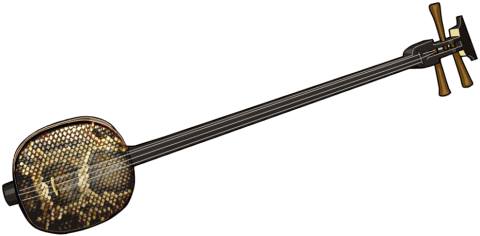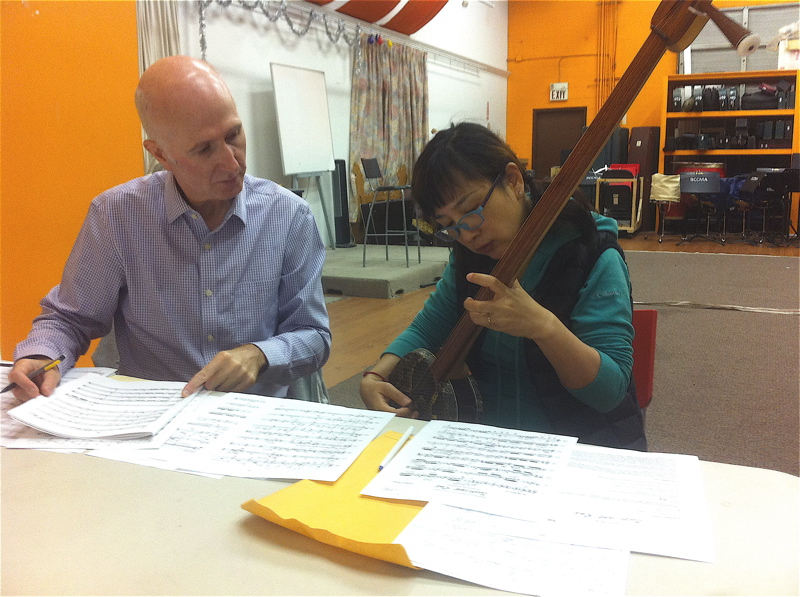 I’ve been a composer for a long time now, almost twenty years since I finished my doctoral degree in Cleveland. I’ve written for all kinds of instruments, and learned how to play a little on a lot of them. So it’s not often now that I have an opportunity to write for an instrument I know absolutely nothing about.
I’ve been a composer for a long time now, almost twenty years since I finished my doctoral degree in Cleveland. I’ve written for all kinds of instruments, and learned how to play a little on a lot of them. So it’s not often now that I have an opportunity to write for an instrument I know absolutely nothing about.
Thanks to a recent project with the Vancouver Inter-Cultural Orchestra, a new instrument has been added to my list: the sanxian.
VICO was kind enough to invite me, along with a half-dozen other composers, to be part of a project combining Western and not-Western instruments. VICO put together some demonstrations with local performers, playing a host of instruments. We each got to pick one, then write a piece for that instrument plus string quartet.
All the instruments were fascinating. Some of them I could not quite get my head around. But the one that intrigued me the most was the Chinese sanxian. It’s like what happens when a lute and a banjo have a baby. Plus I loved the energy of Vancouver-based sanxian virtuoso Geling Jiang, and I really wanted to work with her.
 After Geling’s demo, I had to find out all I could. How did composers learn about instruments before the internet? I now know my first port of call for research is YouTube. Add some Google searches for colour and numbers in Chinese symbolism and culture, and I was set to compose.
After Geling’s demo, I had to find out all I could. How did composers learn about instruments before the internet? I now know my first port of call for research is YouTube. Add some Google searches for colour and numbers in Chinese symbolism and culture, and I was set to compose.
A few weeks later, I had a draft of a new piece, Jubilant Red. Geling and I met to workshop the sanxian part together. Always a good thing and a great opportunity to make sure what I imagined is actually “sanxianistic”. (Which, yes, looks like “satanistic” and yes, the piece is devilishly tricky. But thanks to Geling, it works!)
Geling is not just a virtuoso, she’s tons of fun. I had a great time going through the nitty-gritty of the part. A few refinements made and entered into the computer, and I’m ready for the workshop with string quartet later this year.

Leave A Comment